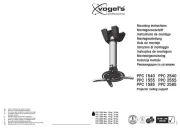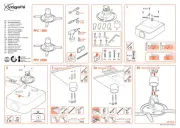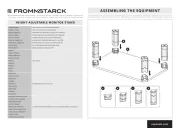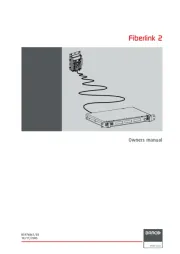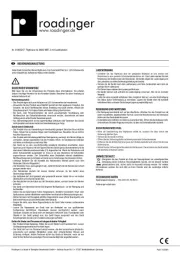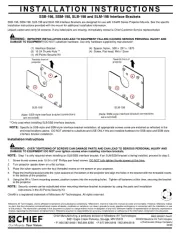
EN DN0301, DN0302 24V Fuse Module Instruction Manual
DE DN0301, DN0302 24V-Sicherungsmodul Bedienungsanleitung
Read this first!
Before operating this unit please read the manual thoroughly and retain it for future reference! This
device may only be installed and put into operation by qualified personnel. If damage or malfunction
should occur during operation, immediately turn power off and send unit to the factory for inspection.
The unit does not contain serviceable parts.
The information presented in this document is believed to be accurate and reliable and may change
without notice. For any clarifications the English translation will be used.
Intended Use: This device is designed for installation in an enclosure and is intended for general
use such as in industrial control, office, communication and instrumentation equipment. Do not use
this device in aircraft, trains and nuclear equipment where malfunction may cause severe personal
injury or threaten human life.
Vor Inbetriebnahme lesen!
Bitte lesen Sie diese Warnungen und Hinweise sorgfältig durch, bevor Sie das Gerät in Betrieb
nehmen. Bewahren Sie die Anleitung zum Nachlesen auf. Das Gerät darf nur durch
fachkundiges und qualifiziertes Personal installiert werden. Bei Funktionsstörungen oder
Beschädigungen schalten Sie sofort die Versorgungsspannung ab und senden das Gerät zur
Überprüfung ins Werk. Das Gerät beinhaltet keine Servicebauteile.
Die angegebenen Daten dienen allein der Produktbeschreibung und sind nicht als zugesicherte
Eigenschaften im Rechtssinne aufzufassen. Im Zweifelsfall gilt der englische Text.
Bestimmungsgemäßer Gebrauch: Dieses Gerät ist für den Einbau in ein Gehäuse konzipiert
und zur Verwendung für allgemeine elektronische Geräte, wie z.B. Industriesteuerungen,
Bürogeräte, Kommunikationsgeräte oder Messgeräte geeignet. Benutzen Sie dieses Gerät nicht
in Steuerungsanlagen von Flugzeugen, Zügen oder nuklearen Einrichtungen, in denen eine
Funktionsstörung zu schweren Verletzungen führen oder Lebensgefahr bedeuten kann.
WARNING
WARNUNG
Risk of electrical shock, fire, personal injury or death.
1) Turn power off before working on the device. Protect against inadvertent re-powering.
2) Make sure that the wiring is correct by following all local and national codes.
4) Do not modify or repair the unit.
4) Do not open the unit.
5) Use caution to prevent any foreign objects from entering the housing.
6) Do not use in wet locations or in areas where moisture or condensation can be expected.
Missachtung nachfolgender Punkte kann einen elektrischen Schlag, Brände, schwere Unfälle
oder Tod zur Folge haben.
1) Schalten Sie die Eingangsspannung vor Installations-, Wartungs- oder Änderungsarbeiten ab
und sichern Sie diese gegen unbeabsichtigtes Wiedereinschalten.
2) Sorgen Sie für eine ordnungsgemäße und fachgerechte Verdrahtung.
3) Führen Sie keine Änderungen oder Reparaturversuche am Gerät durch.
4) Gerät niemals öffnen.
5) Verhindern Sie das Eindringen von Fremdkörpern, wie z.B. Büroklammern und Metallteilen.
6) Betreiben Sie das Gerät nicht in feuchter Umgebung oder in einer Umgebung, bei der mit
Betauung oder Kondensation zu rechnen ist.
Product Description
This fuse module fulfills two basic functions. First it distributes the current of a large power source to
four lower current output channels and therefore allows for smaller wires to be used. The second
function is to permit only so much current on the outputs that the input voltage of this unit (which
corresponds to the output voltage of the power supply) does not fall below 21V. This ensures a
reliable supply voltage for sensitive equipments, such as PLCs, controls or sensors, when they are
connected directly to the same power supply as the fuse module.
The fuse module has one 24V input and four output channels to which the current is distributed.
Each output channel is equipped with a redundant electronic over-current fuse, which avoids that
wires will be overloaded. All four output channels will shutdown simultaneously, if the current of one
individual channel is exceeded.
safeguard circuit in the input stage of the fuse module works like a valve. It permits only so much
current that the input voltage does not drop below 21V. In case the input voltage would fall below
this value (e.g. due to overloads, too small of a power supply or high inrush currents such as from
starting a motor), all four output channels will be actively current limited and will shutdown after a
certain period of time.
typical wiring configuration is shown below. All sensitive loads are connected directly to the power
supply. If needed, these load circuits can be protected with standard circuit breakers or fuses. Loads
which are less sensitive to voltage dips or interruptions or which are the source of the voltage drop
themselves are connected to the output of the fuse module.
Gerätebeschreibung
Dieses Sicherungsmodul erfüllt zwei grundlegende Aufgaben: Einerseits verteilt es den Strom
eines leistungsstarken Netzgerätes auf vier stromüberwachte Kanäle und ermöglicht somit eine
weitere Verkabelung mit kleineren Drahtquerschnitten. Andererseits lässt es nur soviel Strom am
usgang zu, dass die Eingangsspannung nicht unter 21V abfällt. Damit wird eine sichere und
unterbrechungsfreie Versorgung für empfindliche Verbraucher (wie z.B. Steuerungen und
Sensoren) möglich, wenn diese an die gleiche Stromversorgung wie das Sicherungsmodul selbst
angeschlossen werden.
Das Sicherungsmodul hat einen 24V-Eingang und vier Ausgänge, auf die der Strom verteilt wird.
Jeder Ausgangskanal ist mit einer redundanten elektronischen Überstromschutzeinrichtung
ausgestattet, welche eine Überlastung von Ausgangsleitungen verhindert.
Wird ein zulässiger Kanalstrom überschritten, begrenzt das Modul die Ausgangsströme und
schaltet danach alle vier Ausgänge ab.
Ein Schutzschild in der Eingangsstufe des Sicherungsmoduls arbeitet dabei wie ein regelbares
Ventil und lässt nur so viel Strom durch, dass die Versorgungsspannung nicht unter 21V absinkt.
Ein Unterschreiten dieser Schwelle könnte zum Beispiel wegen eines zu schwach ausgelegten
Netzgerätes, einer Überlast oder eines zu hohen Einschalt- oder Anlaufstromes auftreten.
In solchen Fällen werden alle Ausgänge für eine kurze Zeit aktiv strombegrenzt gefolgt von einer
bschaltung aller vier Ausgangskanäle.
In einer typischen Konfiguration, wie unten gezeichnet, werden die empfindlichen Verbraucher
möglichst direkt an die Stromversorgung angeschlossen. Bei Bedarf können hier Standard-
Leitungsschutzschalter zur Absicherung verwendet werden. Verbraucher, die unempfindlich auf
kurze Spannungsunterbrechungen reagieren oder selbst die Ursache für Einbrüche auf der 24V-
Versorgung sind, werden an den Ausgängen des Sicherungsmoduls angeschlossen.
PLC, controls
(sensitive loads)
DC 24V
Power
Supply
Relays, Solenoids
Displays
Motor 2
Motor 1A1
A2
A4
A3
Fuse Module
Safeguard
DC 24V
Netz-
gerät
Relais, Magnetspulen
Anzeigen, Monitore
Motor 2
Motor 1A1
A2
A4
A3
Steuerungen
(empfindliche Verbraucher)
Sicherungsmodul
Schutzschild
Installation
This fuse module is suitable for DIN-rail mounting. Use DIN-rail according to EN 60715 or EN 50022
with a height of 7.5 or 15mm.
Keep the following installation clearances:
Top and bottom: min. 40mm on top, 20mm on the bottom; Left and right: 0mm
The fuse module can be used with any regulated 24Vdc power supply. If the power source can
deliver more than 40A continuous, the fuse module shall be equipped with an external input fuse
(e.g. 30/32A). The power capability and performance of the power supply can limit the output
characteristics of the fuse module.
Make sure that the input voltage polarity is correct before applying the input voltage.
Do not connect batteries to the outputs of the fuse module.
high voltage drop between the power supply and the fuse module might cause a malfunction.
Wiring schemes can be found in Fig. 2.
Installation
Das Gerät ist zur Montage auf DIN-Schienen entsprechend EN 60715 oder EN 50022 mit einer
Höhe von 7,5 oder 15mm geeignet und kann mit beliebigen geregelten 24Vdc
Stromversorgungen verwendet werden. Bei Stromversorgungen mit Dauerausgangsströmen
über 40A muss am Eingang eine externe Sicherung (z.B. 30/32A) vorgeschaltet werden. Die
Eigenschaften und Leistungsfähigkeit der Stromversorgung können die Ausgangsparameter des
Sicherungsmoduls einschränken.
Folgende Mindestabstände sind bei der Installation einzuhalten:
Oben mindestens 40mm und unten mindestens 20mm; links und rechts: 0mm
uf korrekte Polarität der Eingangsspannung ist zu achten.
Keine Batterien direkt an die Ausgänge des Sicherungsmoduls anschließen.
Zu hohe Spannungsabfälle zwischen der Stromversorgung und dem Sicherungsmodul können
Fehlfunktionen verursachen. Ein Anschlussdiagramm ist in Bild 2 gezeigt.
EMC Electromagnetic Compatibility
CE mark is in conformance with the EMC directive.
EMC Immunity: EN 61000-6-1, EN 61000-6-2
EMC Emission EN 61000-6-3, EN 61000-6-4, FCC Part 15 ClassB
EMV Elektromagnetische Verträglichkeit
Das CE Zeichen ist angebracht und erklärt die Erfüllung der EMV Richtlinie.
Störfestigkeit: EN 61000-6-1, EN 61000-6-2
Störaussendung: EN 61000-6-3, EN 61000-6-4,FCC Part 15 Klasse B
ifm electronic GmbH • Friedrichstraße 1 • 45128 Essen, Germany
e-mail: info@ifm.com • www.ifm.com • Tel: +49 201 2422-0 • Fax: +49 201 2422 1200
© 2017 • Rev.: 05/2017




